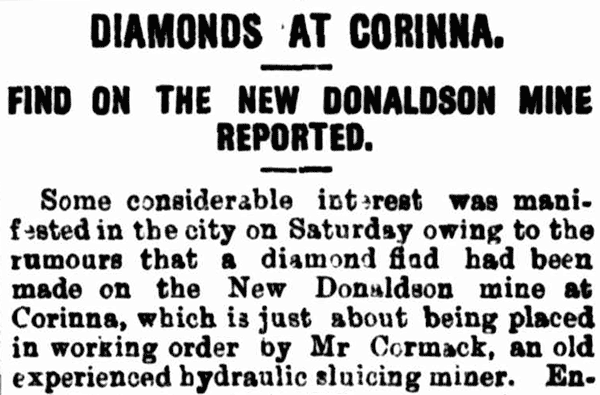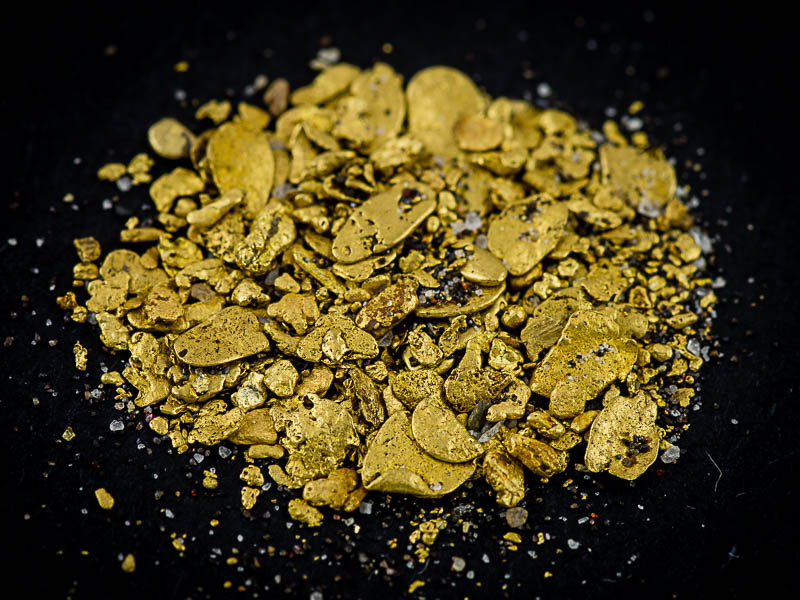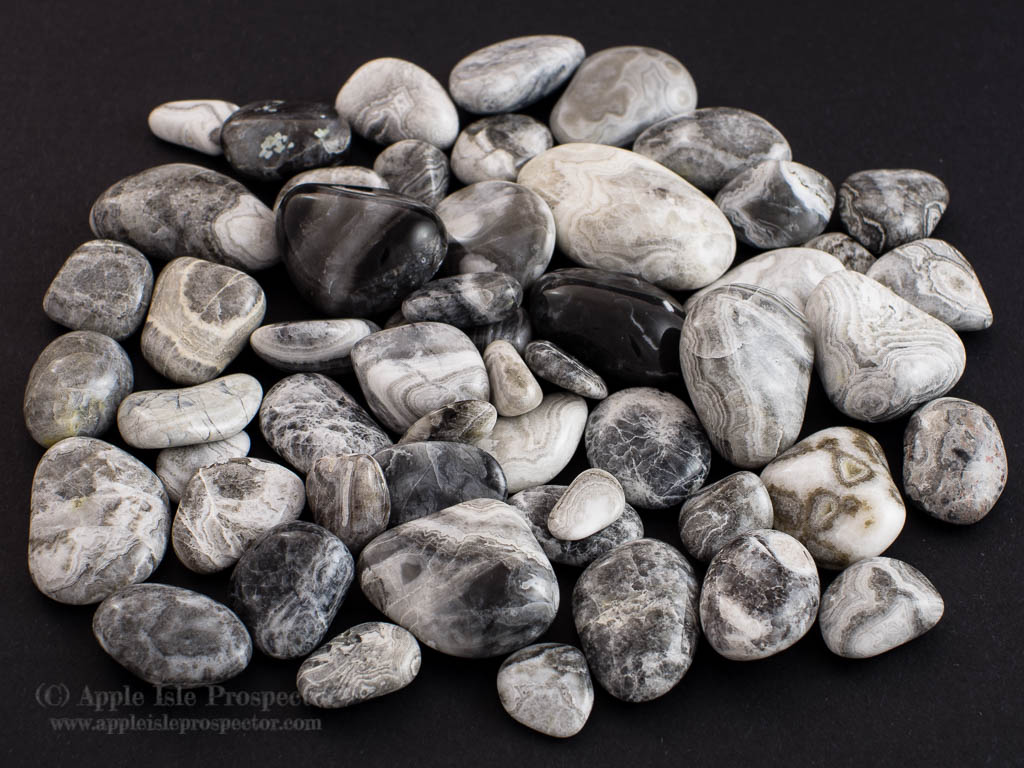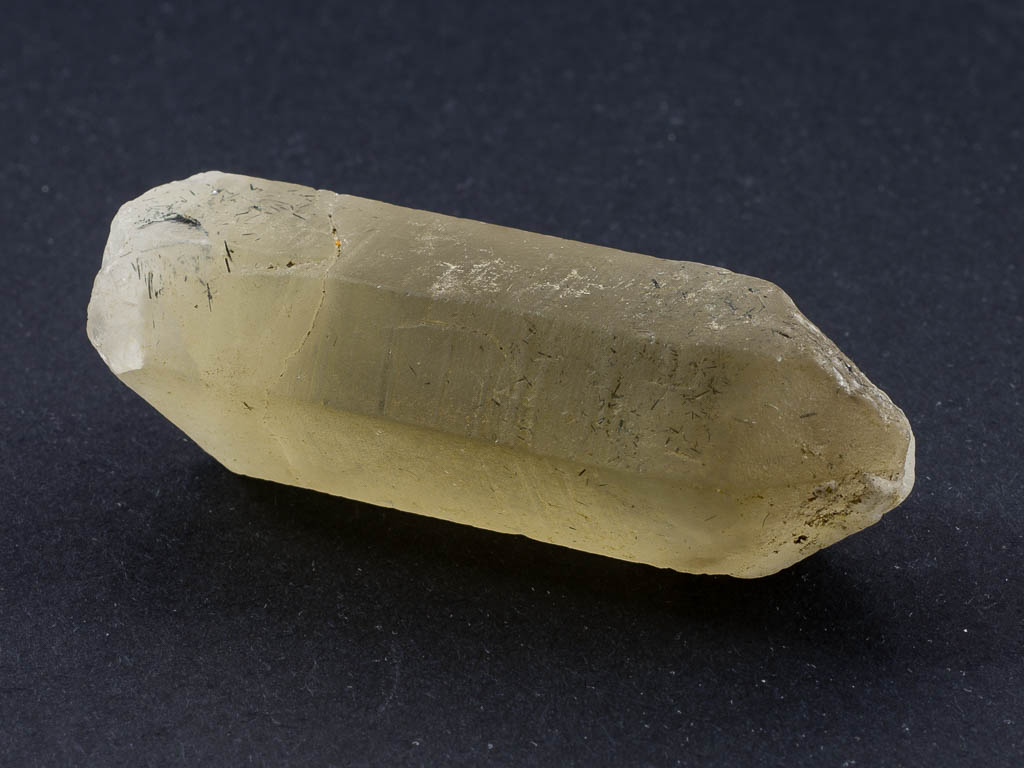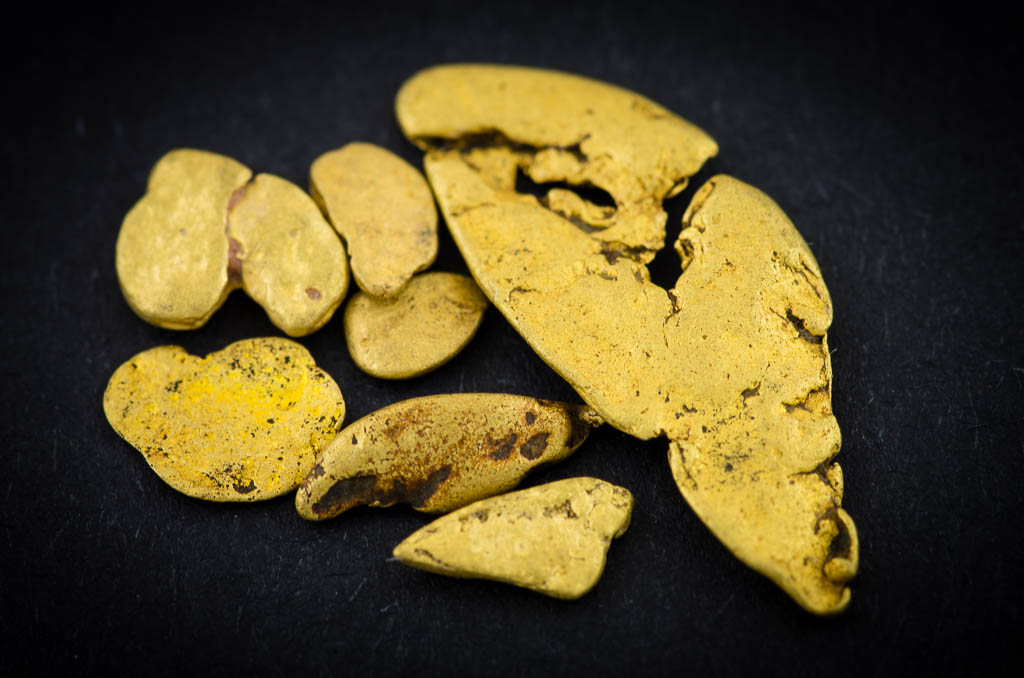When thinking Tasmanian diamonds, most people have heard of Killiecrankie diamonds, which are really topaz (and very good topaz at that). However, several real, verified diamonds have also been found in Tasmania.
Continue readingPosts Tagged → Tasmania
Alluvial gold part 2
In this second post on alluvial gold, I’ll go into other methods used traditionally (and nowadays) by prospectors: the cradle (or rocker box) and the sluice, as well as a modern invention, the highbanker.
Continue readingDrip Beach agates
One of the classic locations to fossick in southern Tasmania is Drip Beach, in Lymington, where you can find pebbles of grey lace agate scattered around the beach. Find out where it is, how to find lace agate, and what you can do with it.
Continue readingThe Mathinna goldfield
The Mathinna goldfield started, like many others, with the discovery of alluvial gold, this time in Black Horse Gully. The area contains one of Tasmania’s largest gold mines, the New Golden Gate, which had a total (historical) production of over 260,000 ounces (~8 tons) of gold. The whole area is riddled with mines, prospects and old workings, and is fairly easy access with light bush.
Continue readingSmoky quartz on Mount Cameron
The Gladstone designated Fossicking Area is located on the northern slopes of Mount Cameron, in north-eastern Tasmania. In it you can fossick for gemstones such as topaz, smoky quartz, citrine, amethyst and clear quartz, as well as tin, possibly minor gold and other minerals. The main material that Mount Cameron is known for is its large smoky quartz.
Continue readingAlluvial gold part 1: gold panning
Are you interested in looking for alluvial gold? Did you know that most Tasmanian gold rushes and all but one of Tasmania’s great gold mines were found by prospectors originally following leads of alluvial gold? In this post I will briefly describe alluvial gold, and go into places you might go, where to do research, and link to some good videos on how to pan, if you’re just starting out.
Continue reading
